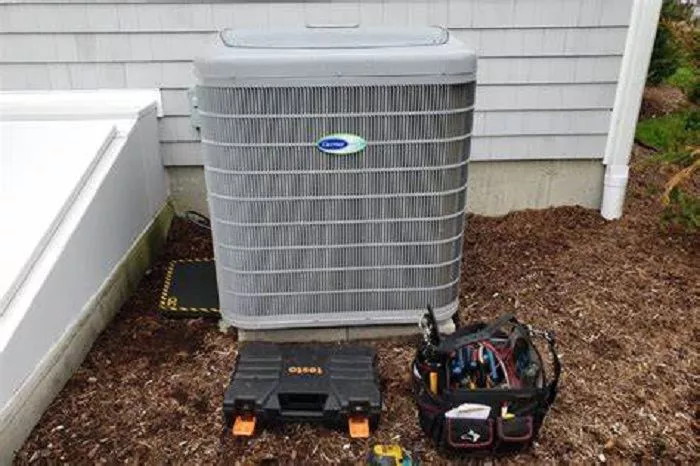The air conditioning (AC) system is essential for maintaining comfort in a home, especially during hot weather. One of its most critical components is the AC compressor, which plays a vital role in cooling your home. However, many homeowners are unsure where the compressor is located or how it functions.
The Function of an AC Compressor
- The compressor is the heart of the air conditioning system.
- It pressurizes refrigerant gas, turning it into a high-temperature, high-pressure vapor.
- This refrigerant then flows to the condenser coil, where it releases heat and cools down.
- Without a functioning compressor, the AC system cannot cool your home.
Common Locations of the AC Compressor in a House
Outdoor Unit (Most Common Location)
Heat Dissipation: The compressor generates heat, and placing it outside allows for better airflow and cooling.
Noise Reduction: Compressors can be loud, so keeping them outside minimizes indoor noise.
Space Efficiency: Indoor space is saved for air handlers and ductwork.
Where to Find the Outdoor Unit
Side or Back of the House: Most units are installed on a concrete slab near an exterior wall.
Roof (In Some Cases): MIn homes with limited yard space, the compressor may be placed on the roof.
Basement or Crawlspace (Rare): Some homes have outdoor units in shaded basement areas, but this is uncommon.
Packaged AC Units (Alternative Location)
On the Roof: Common in commercial buildings and some residential homes (especially in warmer climates).
Beside the House (Ground Level): Similar to split systems but with all parts in one unit.
Window or Portable AC Units (Smaller Systems)
- In window ACs, the compressor is inside the same unit mounted in the window.
- Portable ACs also contain the compressor within the mobile unit.
Factors Affecting Compressor Placement
Climate & Weather Conditions
- In hot climates, compressors are often placed in shaded areas to prevent overheating.
- In cold regions, they may be installed where snow and ice won’t block airflow.
Home Design & Space Availability
- Homes with small yards may place the compressor on the roof.
- Houses with basements or garages might have them in utility areas (though this is rare).
Local Building Codes & HOA Rules
- Some neighborhoods have noise restrictions, requiring compressors to be placed away from property lines.
- Ventilation requirements may dictate minimum clearances around the unit.
Safety & Maintenance Considerations
Safety Precautions
Never touch exposed wiring: High voltage can cause injury.
Keep the area clear: Remove leaves, dirt, and debris around the unit.
Avoid DIY repairs: Compressors contain refrigerant, which requires EPA certification to handle.
Routine Maintenance Tips
Clean the surrounding area: Trim bushes and remove obstructions.
Check for unusual noises: Grinding or rattling sounds may indicate a problem.
Schedule professional inspections: HVAC technicians should check refrigerant levels and electrical connections annually.
Signs of a Failing Compressor
Warm air blowing from vents: Could mean the compressor isn’t pressurizing refrigerant.
Frequent cycling on/off: May indicate overheating or electrical issues.
High energy bills: A struggling compressor uses more electricity.
Conclusion
The AC compressor is a crucial part of your home’s cooling system, and its location affects performance and maintenance. In most homes, it is found in the outdoor condenser unit, typically placed at the side or back of the house. However, in packaged units, it may be on the roof or ground level.

